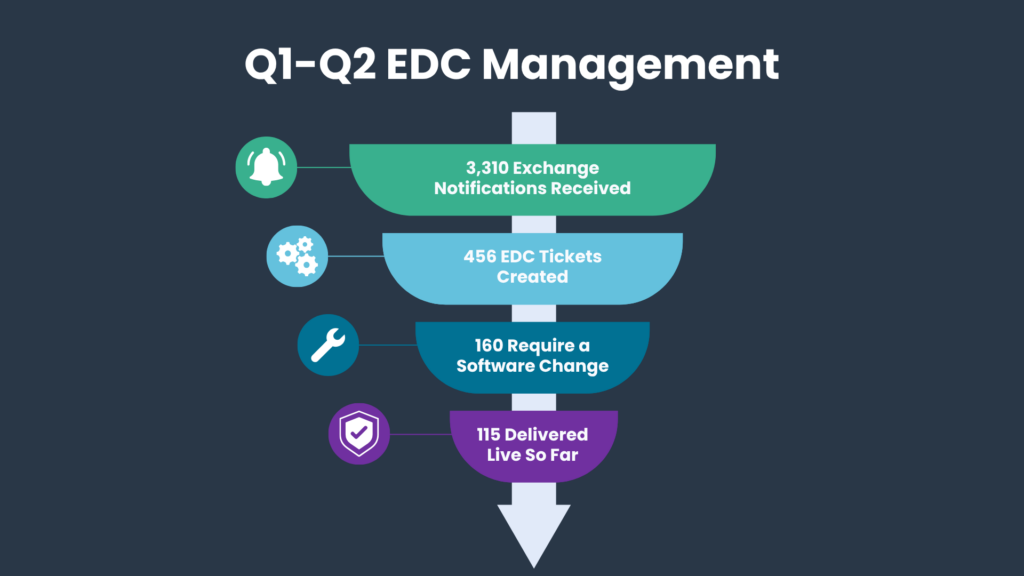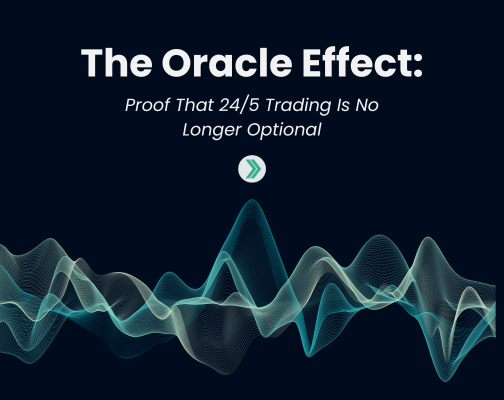Maximize Efficiency Without Compromise: 5 Qualities to Look for in Your Market Data Vendor
Every business leader is being asked to do more with less nowadays. Rising infrastructure costs, shrinking margins, and growing market complexity make optimization more critical and difficult than ever before. Yet, it’s still possible to maximize efficiency without sacrificing performance or business priorities. The key is partnering with a truly innovative market data vendor.
Below, we outline the five qualities to look for when evaluating a market data vendor and how meeting those criteria can help firms future-proof their infrastructure, streamline operations, and stay ahead of the curve.
Why the Right Market Data Vendor Matters
In the capital markets industry, real-time market data drives every decision, from execution all the way to compliance. That means that your data vendor doesn’t just provide a helpful service—it’s also a critical part of your competitive strategy.
To truly maximize efficiency, firms need more than just data. They need vendors who deliver adaptability, proactive support, reliability, and a path to future innovation.
5 Qualities to Look for in a Market Data Vendor
Partnering with the right market data provider can enhance your infrastructure, strategy, and operations. But what does the right market data vendor look like? When evaluating vendors, prioritize the following qualities to ensure your data partner can meet today’s demands—and scale with tomorrow’s.
1. Adaptability: Infrastructure That Scales with You
Your data needs will evolve—your vendor should too. Whether expanding into new asset classes, onboarding new markets, or optimizing infrastructure, adaptability means you don’t have to start over every time your strategy shifts.
Future-proofing is key. Look for vendors whose architecture can evolve with your business and integrate seamlessly with your existing (and future) systems. That includes:
- Customizable data feeds tailored to your needs
- Configurable delivery based on your platform or latency needs
- Unified architecture to support consistency across teams and regions
The best vendors offer solutions that scale with you and adapt to your ever-evolving tech stack, ensuring you won’t have to rework your architecture as your tech stack evolves.
2. Proactive Support: Staying Ahead of Exchange-Driven Change
In a fast-moving trading environment, reacting to issues after they impact production isn’t enough. The right vendor helps you stay ahead of change—especially when it comes to evolving exchange protocols and feed specifications. Exchange-driven changes (EDCs) can be complex and frequent, and keeping up with them requires continuous monitoring, timely updates, and efficient deployment across your infrastructure.
For firms managing data in-house, especially across multiple venues, staying current can become a resource drain. A proactive vendor simplifies that process, handling the complexity behind the scenes so your team can stay focused on strategy, not system maintenance.
Key indicators of a vendor that prioritizes proactive support include:
- Centralized configuration and system-wide version control
- Real-time visibility into data feed health and latency metrics
- Ongoing EDC monitoring and updates to accommodate exchange protocol changes
- Training and documentation to keep your team current with system versions and updates
The best vendors don’t just react to issues—they empower you with tools, visibility, and timely updates to minimize disruptions and maximize efficiency as your environment evolves.
Below is an example of our EDC report. We monitor and analyze exchange-driven changes on a weekly basis and provide clients with a quarterly summary via our newsletter. This visibility helps them stay informed on evolving industry requirements, upcoming protocol changes, and broader market data trends.

3. Reliability: Consistency in All Conditions
Speed means nothing without stability. Your vendor should deliver consistent performance even during periods of volatility, backed by resilient system design. Fast-moving markets demand reliable infrastructure you can count on to operate predictably under pressure. The best vendors design for the unexpected.
A reliable vendor should offer:
- Proven uptime during peak periods
- Fully redundant delivery paths
- Infrastructure engineered for performance under pressure
In this business, resilience is efficiency. When systems perform predictably under pressure, you reduce downtime, minimize risk, and protect your competitive edge. That kind of reliability ensures that when every microsecond counts, your operations keep running. No matter what the market throws at you, it just works.
4. Cost & Infrastructure Efficiency: Balancing Price and Value
Maximizing efficiency means finding a solution that delivers speed and scale without driving up operational costs. Power, space, and connectivity expenses are increasing across co-location facilities. Our internal research indicates a 10% increase in power costs over the last 18 months, and cross-connect fees continue to rise. Market data infrastructure must do more with less.
The right vendor helps you reduce your total cost of ownership by building solutions that reduce complexity, optimize resources, and maximize efficiency as your infrastructure grows.
5. Constant Innovation: Adapting to a Changing Landscape
Market structures evolve. Protocols shift. Volumes surge. Your vendor should be ahead of these changes. Vendors must be agile in the face of growing uncertainty, ensuring sustainable architecture and versatile processes. Too many firms rely on throwing more hardware at the problem, layering on complexity without solving the underlying limitations. That’s not innovation—that’s inertia.
To truly maximize efficiency, firms need partners who design for what’s next. Look for vendors that offer:
- Future-proof architecture built to scale with shifting business and market demands
- Flexible integration paths that evolve with your tech stack—not against it
- A track record of adapting to industry changes without compromising stability or cost control
Today’s trading environment is nothing like it was just a few years ago, and it’s impossible to accurately forecast what’s to come. As a result, businesses need access to a sustainable solution, one that offers centralized, scalable delivery of market data with fewer servers, less power consumption, and lower costs.
The most innovative vendors don’t just react to change—they help you stay ahead of it.
Built to Maximize Efficiency: Introducing Exegy Nexus
Innovation without execution is just theory. That’s why Exegy built Nexus, a market data solution engineered for the next era of trading.
Nexus was designed to tackle the exact challenges outlined above: rising infrastructure costs, fragmented stacks, and the ever-growing flood of real-time data. It doesn’t just process data faster—it rethinks how data flows through your entire stack. Exegy’s Nexus centralizes feed handling and book building in a single, compact appliance, delivering FPGA-powered performance with deterministic latency and API-ready flexibility.
But what truly sets Nexus apart is what comes after processing. Most vendors stop at normalization, leaving internal teams to manage a firehose of data on their own. The Nexus Nic helps with CPU consumption, leaving more processing power to our customers’ applications (algos, SOR, market making), in turn removing some constraints on development teams by providing them more “room” on their machines
Whether you’re looking to simplify your infrastructure, reduce total cost of ownership, or gain a consistent edge in the latency race, Exegy Nexus delivers the performance, efficiency, and usability modern trading demands.
Preorders are now open on a first-come, first-served basis.
Want to learn more about how Nexus can help your team? Talk to our team today.



